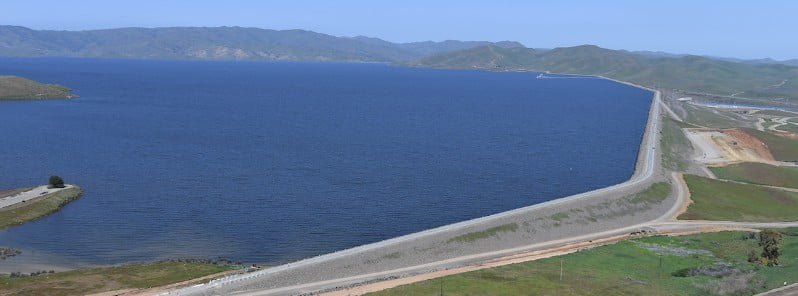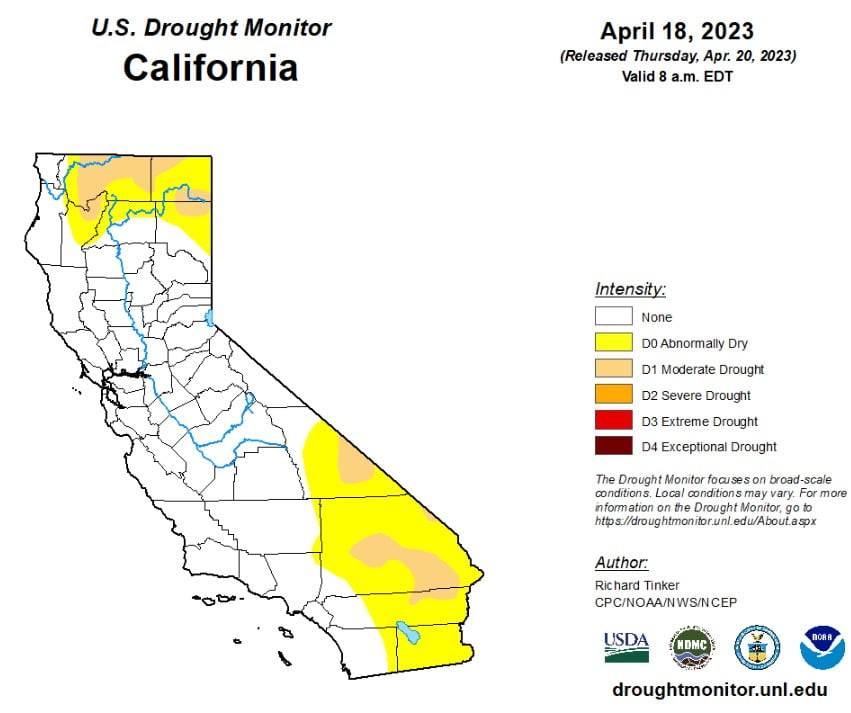California’s water supply boosted to 100% for the first time since 2006

The Department of Water Resources (DWR) announced the first full water supply allocation since 2006, benefiting 27 million residents across California after a record winter.
- With reservoirs nearing capacity and snowmelt runoff starting to occur, DWR now expects to deliver 100 percent of requested water supplies, up from just 5 percent announced before the record-breaking winter.
The Department of Water Resources (DWR) announced this week that it would deliver 100% of the requested water supplies to cities and agricultural operations across California. This marks the first time since 2006 that the state’s canals, pumps, and reservoirs have been able to provide full water allocations, benefiting 27 million residents.
DWR director Karla Nemeth stated in a press release that careful management of reservoir operations during the extreme winter enabled the agency to maximize water deliveries while also enhancing environmental protections. The State Water Project, a system of reservoirs, canals, and pumps, moves water from the water-rich regions of northern California to Southern California. The project’s operations and water availability can vary greatly between dry and wet years.
As a result of the record winter snowfall, the DWR increased allocations from 75% in March to 100% in April. At full capacity, the project will deliver 4.2 million acre-feet (1 030 703 ha) of water to its 29 contractors, enough to supply the city of Sacramento for 28 years. Prior to this winter’s atmospheric rivers and record snowfall in the Sierra Nevada, the DWR warned that it could only provide 5% of requested supplies in 2023, following three of the driest years on record.
While this winter has significantly improved drought conditions, it will take years for the Central Valley’s overdrafted groundwater basins to recover from agricultural overpumping, and the Colorado River Basin continues to face long-term drought. The San Luis Reservoir in Merced County is now full, and Oroville, the state’s largest reservoir, along with reservoirs in Southern California, is expected to be full by the end of May. Currently, statewide reservoir storage is at 105% of average.
Water officials have warned that flood danger may persist throughout the year in the San Joaquin Valley as reservoirs attempt to catch and store melting snow. Heavy rainfall in February and March has already impacted several communities and led to the resurgence of historic Tulare Lake.
Over the past 12 months, California has experienced a significant change in its drought conditions. According to the Drought Monitor data for the state (dated April 18, 2023, and made public on April 20), the situation has improved considerably, with 65.67% of the state now classified as having no drought conditions.


At the start of the water year on September 27, 2022, California faced a dire situation with 100% of the state experiencing drought (D0-D4) conditions. At that time, 99.76% of the state was in moderate to exceptional drought (D1-D4), 94.01% in severe to exceptional drought (D2-D4), 40.91% in extreme to exceptional drought (D3-D4), and 16.57% in exceptional drought (D4) conditions. The Drought Severity and Coverage Index (DSCI) stood at 351.
By the start of the calendar year on December 27, 2022, drought conditions persisted, with 100% of the state in drought (D0-D4) conditions. However, there was a slight improvement with 97.94% in moderate to exceptional drought (D1-D4), 80.56% in severe to exceptional drought (D2-D4), 35.50% in extreme to exceptional drought (D3-D4), and 7.16% in exceptional drought (D4) conditions. The DSCI dropped to 321.
Three months ago, on January 17, 2023, there was a further reduction in drought severity, although 99.36% of the state still faced drought (D0-D4) conditions. At that time, 92.12% of the state experienced moderate to exceptional drought (D1-D4), and 42.84% faced severe to exceptional drought (D2-D4). There were no areas classified under extreme to exceptional drought (D3-D4) and exceptional drought (D4) conditions. The DSCI had decreased to 234.
Fast forward to the current date, April 18, 2023, and the state has made significant progress. Now, only 34.33% of California faces drought (D0-D4) conditions, with 8.79% in moderate to exceptional drought (D1-D4) and no areas in severe to exceptional drought (D2-D4), extreme to exceptional drought (D3-D4), or exceptional drought (D4) conditions. The DSCI has dropped to 43, indicating a considerable improvement in the state’s drought situation compared to a year ago when the DSCI was at 336.
| Week | Date | None | D0-D4 | D1-D4 | D2-D4 | D3-D4 | D4 | DSCI |
|---|---|---|---|---|---|---|---|---|
| Current | 2023-04-18 | 65.67 | 34.33 | 8.79 | 0.00 | 0.00 | 0.00 | 43 |
| Last Week | 2023-04-11 | 65.67 | 34.33 | 8.79 | 0.00 | 0.00 | 0.00 | 43 |
| 3 Months Ago | 2023-01-17 | 0.64 | 99.36 | 92.12 | 42.84 | 0.00 | 0.00 | 234 |
| Start of Calendar Year | 2022-12-27 | 0.00 | 100.00 | 97.94 | 80.56 | 35.50 | 7.16 | 321 |
| Start of Water Year | 2022-09-27 | 0.00 | 100.00 | 99.76 | 94.01 | 40.91 | 16.57 | 351 |
| One Year Ago | 2022-04-19 | 0.00 | 100.00 | 100.00 | 95.18 | 40.81 | 0.00 | 336 |
References:
1 State Water Project to Further Increase Water Supply Allocation – California Department of Water Resources – April 20, 2023
2 California boosts State Water Project allocation to 100% — first time in 17 years – The Sacramento Bee – April 20, 2023
3 US Drought Monitor – California – April 20, 2023
Featured image: DWR

Commenting rules and guidelines
We value the thoughts and opinions of our readers and welcome healthy discussions on our website. In order to maintain a respectful and positive community, we ask that all commenters follow these rules.